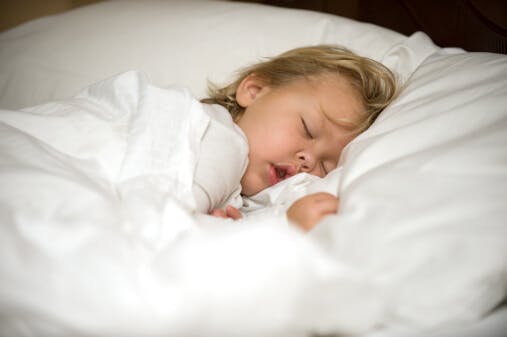The Bedtime Pass Program

For almost ten years now I’ve suggested using a simple, easy “Get Out of Bed Free Card” for those who want to help preschool and school-age children learn to happily stay in their own rooms at night. I’ve heard from thousands of parents around the world who have been thrilled with the results of this bedtime pass program.
Now, in the April 2007 Journal of Pediatric Psychology the author of the original study on the technique, and colleagues, report a randomized controlled trial in 19 children whose sleeping habits were carefully monitored and measured. All of the children in the study were bedtime resistant at the start; they regularly cried, called out, and/or left their rooms after bedtime. Half received bedtime passes, which I’ll describe in a moment. The children who received passes quickly began to call and cry out significantly less frequently. The time to quiet dropped significantly. And trips out of the bedroom dropped to near zero. When the children were monitored again 3 months later, the families were still enjoying these benefits, even though none of them were still using the passes. The children who had never received sleep passes, though, were still crying and calling out, taking longer to quiet at bedtime and still leaving their rooms afterwards. The parents who tried the bedtime passes were very satisfied – 92 percent reported that it was easy and stress-free for them and 100 percent believed that their children experienced no discomfort. This is so important. Not responding to a crying child can be very stressful for both parents and children, and cut against our primal instincts.
So how do you use bedtime passes? Simple.
- Give your child a special card good for one free trip out of their room each night or one visit from a parent – for a brief, acceptable purpose such as a drink and a hug. Many families decorate the cards, often with the child.
- Require the child to get in bed at bedtime, but be sure the free pass is close at hand.
- When the child uses the pass, the card is surrendered for the rest of the night.
- If children leave the room again that night, they are walked back without a word and without eye contact.
This method can work like magic for children age 3 to 10, if your goal is for them to sleep in their own rooms. I’ve also seen it work wonders in some younger and older children. The first couple of nights most children try the pass to be sure it works. They will often try an extra visit or two to be sure you are serious about no attention later in the night. Then, the magic happens: most kids start holding onto their cards throughout the night, in case they might need it later, and fall asleep on their own, remaining in their own rooms all night. If you leave the pass on the nightstand, you might find it in your sleeping child’s hands in the morning. Aren’t they beautiful when they sleep?
What’s your experience with sleep?


